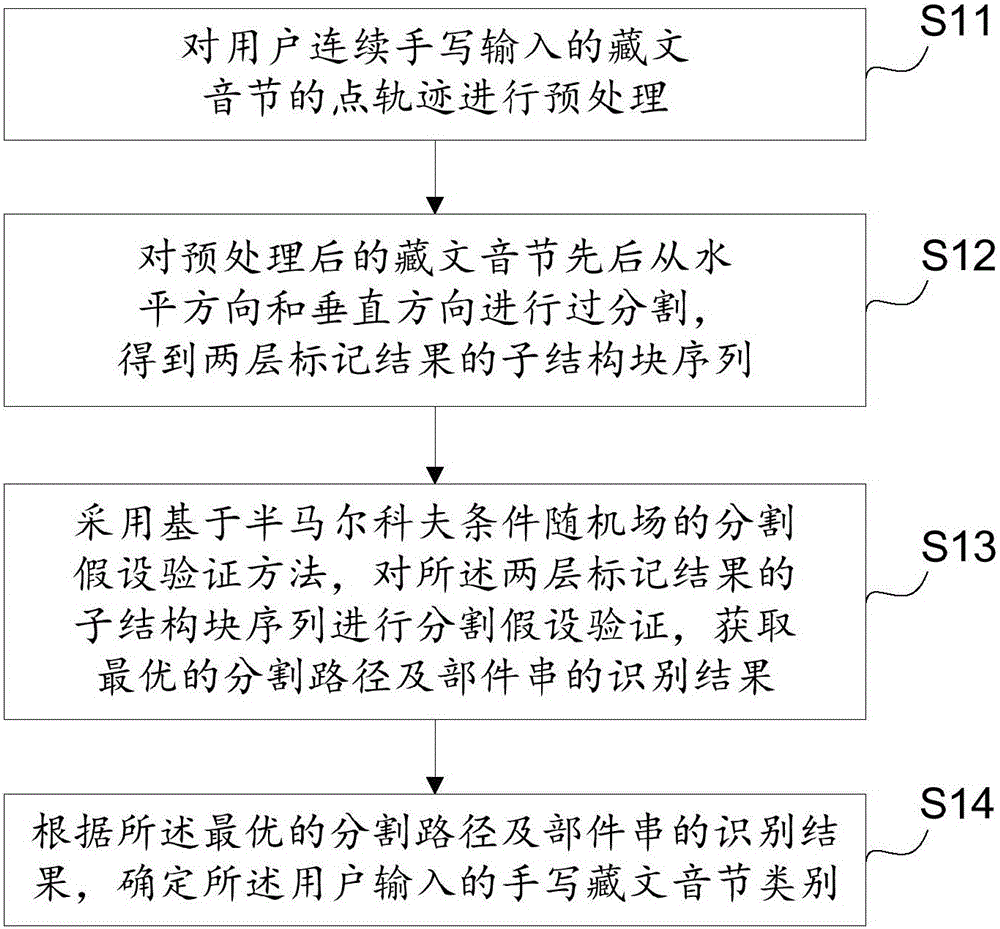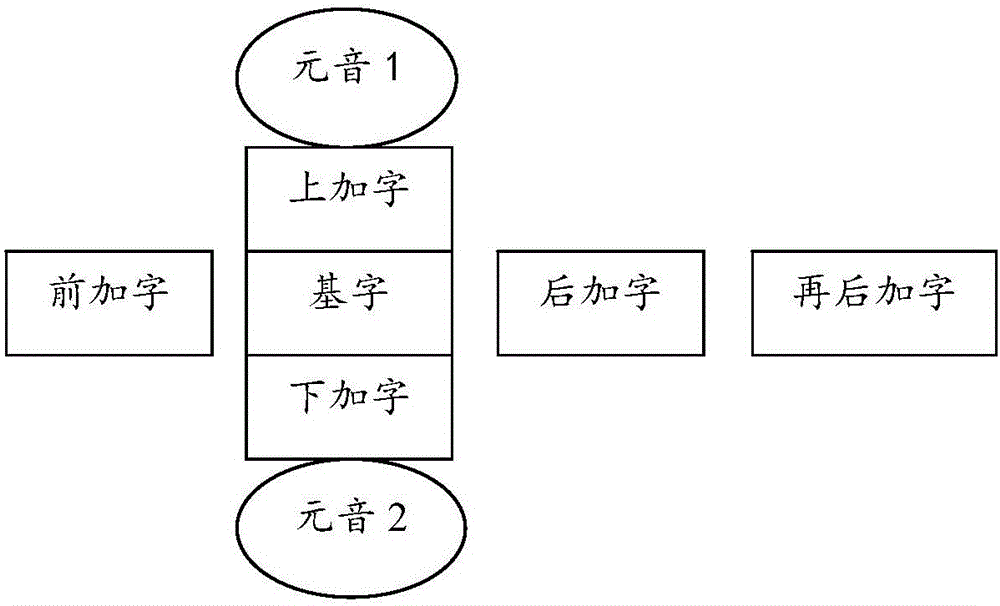Online handwritten Tibetan syllable recognition method and device
A Tibetan language and syllable technology, applied in the field of character recognition, can solve the problems that Tibetan syllables cannot be recognized efficiently, and cannot meet the writing habits and needs of Tibetan users, so as to meet the writing habits and needs and achieve the effect of efficient recognition.
- Summary
- Abstract
- Description
- Claims
- Application Information
AI Technical Summary
Problems solved by technology
Method used
Image
Examples
Embodiment 1
[0026] The present embodiment provides a kind of online handwritten Tibetan syllable recognition method, such as figure 1 As shown, the method includes:
[0027] S11. Preprocessing the dot track of the Tibetan syllables continuously handwritten by the user.
[0028] S12. Segment the preprocessed Tibetan syllables successively from the horizontal direction and the vertical direction to obtain a sub-structural block sequence of two-layer marking results.
[0029] S13. Using a segmentation hypothesis verification method based on a semi-Markov conditional random field, perform segmentation hypothesis verification on the substructure block sequence of the two-layer marking result, and obtain an optimal segmentation path and a component string identification result.
[0030] S14. Determine the handwritten Tibetan syllable category input by the user according to the optimal segmentation path and the recognition result of the component string.
[0031] The online handwritten Tibetan...
Embodiment 2
[0037] This embodiment provides an online handwritten Tibetan syllable recognition method. This embodiment uses the MRG-OHTC sample database of the Multilingual Processing Research Group of the National Engineering Research Center for Basic Software of the Institute of Software, Chinese Academy of Sciences. The database includes handwritten Tibetan syllable samples of 150 different writers. Each writer completed the writing of 827 high-frequency syllables pre-selected, including 456 two-character syllables, 309 three-character syllables, and 62 four-character syllables. indivual. Select 130 sets of (writer) samples for training, and the remaining 20 sets of samples for testing. In addition, the 150 sets of samples are labeled at the character level and syllable level with semi-supervised calibration tools.
[0038] The specific process of the online handwritten Tibetan syllable recognition method provided by the present embodiment is as follows:
[0039] (1) Point trajector...
Embodiment 3
[0075] An embodiment of the present invention provides an online handwritten Tibetan syllable recognition device, such as Figure 6 As shown, the device includes:
[0076] The preprocessing unit 11 is used to preprocess the dot track of the Tibetan syllables continuously handwritten by the user;
[0077] The over-segmentation unit 12 is used to successively over-segment the preprocessed Tibetan syllables from the horizontal direction and the vertical direction to obtain the substructure block sequence of the two-layer marking result;
[0078] The segmentation hypothesis verification unit 13 is used to adopt the segmentation hypothesis verification method based on the semi-Markov conditional random field to perform segmentation hypothesis verification on the sub-structural block sequence of the two-layer marking result, and obtain the optimal segmentation path and component string recognition result;
[0079] The determining unit 14 is configured to determine the handwritten ...
PUM
 Login to View More
Login to View More Abstract
Description
Claims
Application Information
 Login to View More
Login to View More - R&D
- Intellectual Property
- Life Sciences
- Materials
- Tech Scout
- Unparalleled Data Quality
- Higher Quality Content
- 60% Fewer Hallucinations
Browse by: Latest US Patents, China's latest patents, Technical Efficacy Thesaurus, Application Domain, Technology Topic, Popular Technical Reports.
© 2025 PatSnap. All rights reserved.Legal|Privacy policy|Modern Slavery Act Transparency Statement|Sitemap|About US| Contact US: help@patsnap.com



